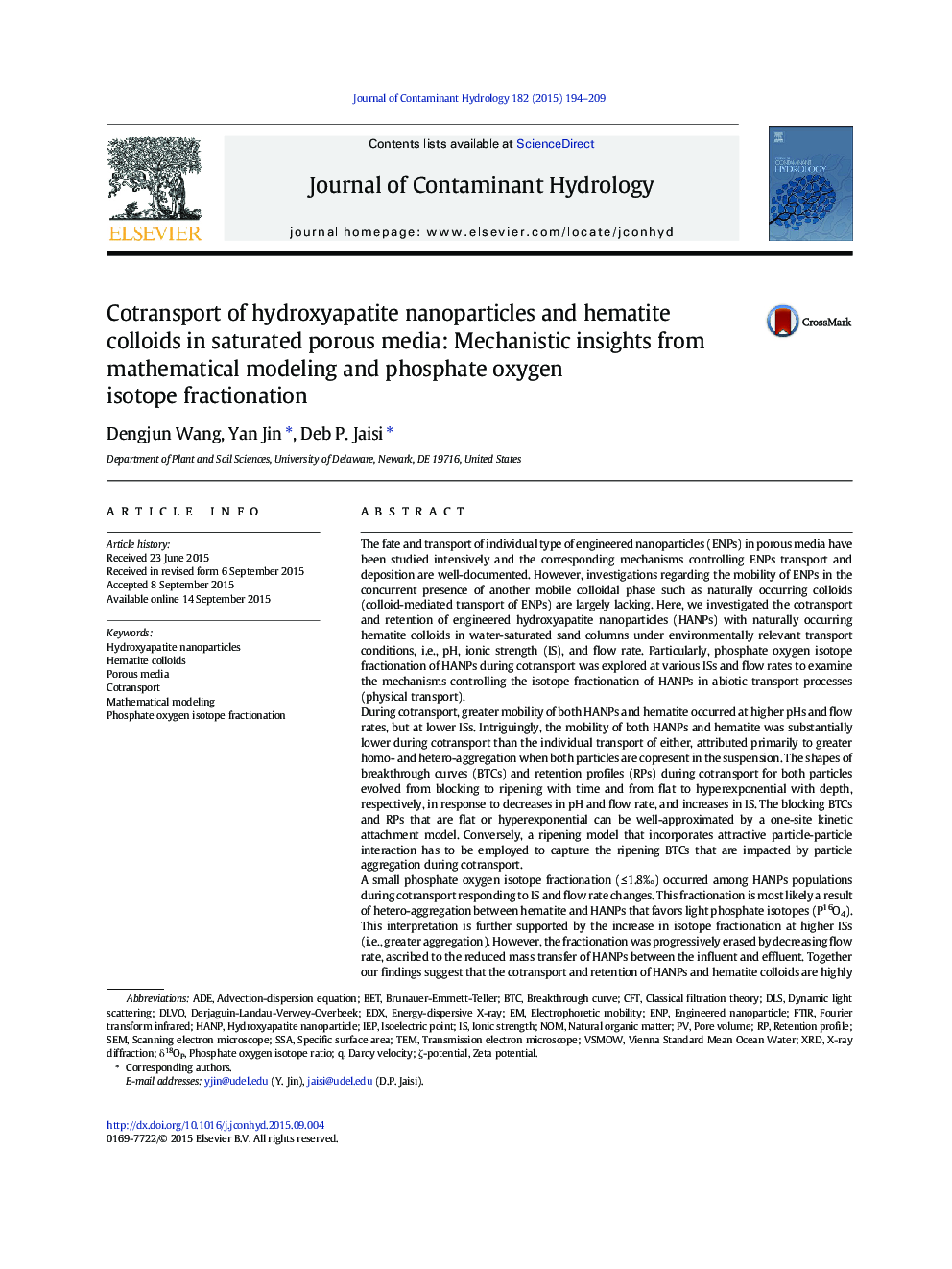| کد مقاله | کد نشریه | سال انتشار | مقاله انگلیسی | نسخه تمام متن |
|---|---|---|---|---|
| 6386434 | 1627028 | 2015 | 16 صفحه PDF | دانلود رایگان |
- Cotransport of HANPs and hematite colloids in saturated sand columns were examined.
- Mobility of both HANPs and hematite colloids was lower during cotransport than individual transport.
- A small phosphate oxygen isotope fractionation (â¤Â 1.8â°) of HANPs occurred during early cotransport but became insignificant later.
- Isotope tracing could serve as a promising tool to identify the sources and transport of phosphate-based NPs in the subsurface.
The fate and transport of individual type of engineered nanoparticles (ENPs) in porous media have been studied intensively and the corresponding mechanisms controlling ENPs transport and deposition are well-documented. However, investigations regarding the mobility of ENPs in the concurrent presence of another mobile colloidal phase such as naturally occurring colloids (colloid-mediated transport of ENPs) are largely lacking. Here, we investigated the cotransport and retention of engineered hydroxyapatite nanoparticles (HANPs) with naturally occurring hematite colloids in water-saturated sand columns under environmentally relevant transport conditions, i.e., pH, ionic strength (IS), and flow rate. Particularly, phosphate oxygen isotope fractionation of HANPs during cotransport was explored at various ISs and flow rates to examine the mechanisms controlling the isotope fractionation of HANPs in abiotic transport processes (physical transport).During cotransport, greater mobility of both HANPs and hematite occurred at higher pHs and flow rates, but at lower ISs. Intriguingly, the mobility of both HANPs and hematite was substantially lower during cotransport than the individual transport of either, attributed primarily to greater homo- and hetero-aggregation when both particles are copresent in the suspension. The shapes of breakthrough curves (BTCs) and retention profiles (RPs) during cotransport for both particles evolved from blocking to ripening with time and from flat to hyperexponential with depth, respectively, in response to decreases in pH and flow rate, and increases in IS. The blocking BTCs and RPs that are flat or hyperexponential can be well-approximated by a one-site kinetic attachment model. Conversely, a ripening model that incorporates attractive particle-particle interaction has to be employed to capture the ripening BTCs that are impacted by particle aggregation during cotransport.A small phosphate oxygen isotope fractionation (â¤Â 1.8â°) occurred among HANPs populations during cotransport responding to IS and flow rate changes. This fractionation is most likely a result of hetero-aggregation between hematite and HANPs that favors light phosphate isotopes (P16O4). This interpretation is further supported by the increase in isotope fractionation at higher ISs (i.e., greater aggregation). However, the fractionation was progressively erased by decreasing flow rate, ascribed to the reduced mass transfer of HANPs between the influent and effluent. Together our findings suggest that the cotransport and retention of HANPs and hematite colloids are highly sensitive to the considered physicochemical factors, and isotope tracing could serve as a promising tool to identify the sources and transport of phosphate-based NPs in complex subsurface environments due to insignificant transport-related isotope fractionation.
145
Journal: Journal of Contaminant Hydrology - Volume 182, November 2015, Pages 194-209
